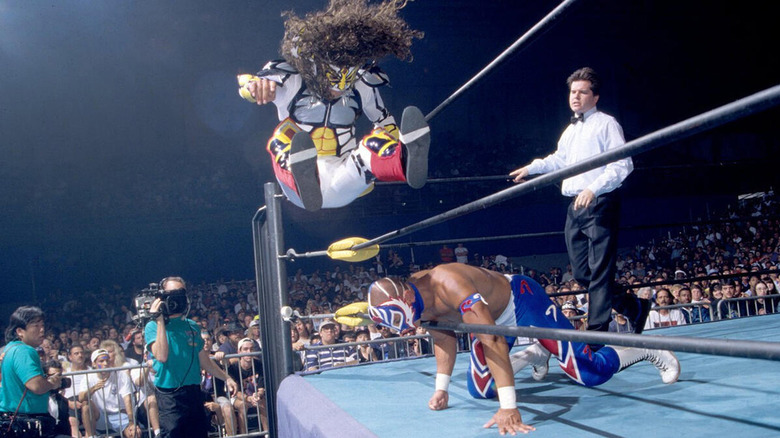Eric Bischoff Assesses Lasting Impact Of WCW's Cruiserweight Division
For the casual American wrestling fan, WCW's Cruiserweight Division was perhaps the first time they had seen smaller-sized athletes deliver entertaining, credible performances. Globally, high-flying styles were certainly nothing new, but Eric Bischoff deserves at least partial credit for giving it a bigger stage to shine in the United States.
On "83 Weeks," Bischoff reflected on the influence of WCW's Cruiserweight Division and its role in creating opportunities for today's stars.
"It opened the door for a lot of potential professional wrestlers who weren't born to be 6-foot-4, 6-foot-5 and 300 pounds," Bischoff said. "All of a sudden, you've got 10, 12, 14-year-old kids that are growing up watching guys like Rey Mysterio and Eddie Guerrero and Chris Benoit and Dean Malenko. And kids that were watching [said], 'Man, someday I'm gonna be a professional wrestler.' 20 years before that, they were s*** out of luck."
The prevailing criticism of WCW, even at the height of its popularity, had always been that top spots were reserved for aging stars too reluctant to step aside. But the Cruiserweight Division remains a positive, making stars out of the likes of Eddie Guerrero and Chris Benoit, though both ultimately had to join WWE to break through WCW's glass ceiling.
Bischoff named AEW's Darby Allin as a person who probably wouldn't have had a shot in the business without the Cruiserweight Division breaking down barriers. "Look at Darby Allin," Bischoff said. "I could put him in my pocket and take him for a walk. He would've never gotten a shot in the business. But today he's there, and he's doing a great job."
WWE kept various incarnations of the cruiserweight and lightweight division after acquiring WCW, though they've generally shifted from keeping smaller stars in their own "division" to integrating them with larger wrestlers.
